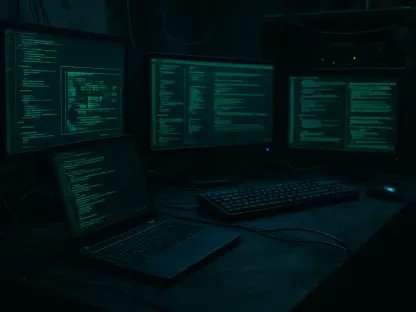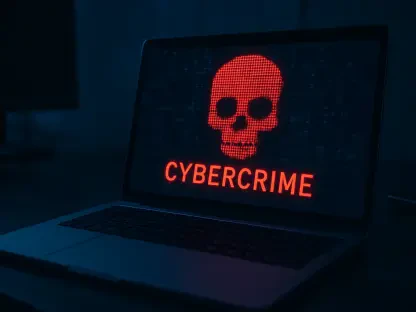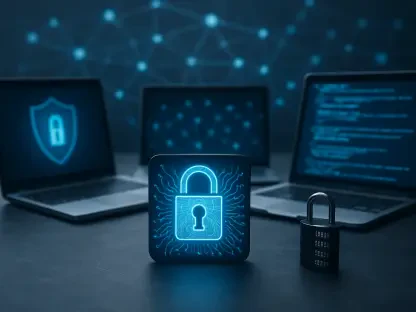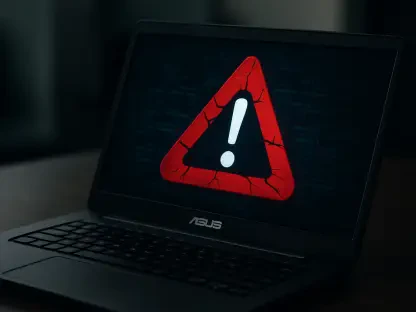In the ever-evolving landscape of cybersecurity, staying informed about the latest threats and trends is crucial for organizations and individuals alike. With the rapid advancement of technology, cyber threats are becoming increasingly sophisticated, posing significant risks to sensitive data and digital infrastructure. From advanced ransomware attacks orchestrated by state-sponsored actors to the exploitation of abandoned cloud resources, the cybersecurity domain is rife with challenges that demand continuous vigilance and adaptability. This article delves into the most recent developments, providing a detailed analysis of emerging threats, state-sponsored cyber activities, technological impacts, industry-specific challenges, and regulatory changes, aiming to equip readers with the knowledge needed to navigate the complex world of cybersecurity.
Emerging Threats in Cybersecurity
The cybersecurity landscape is constantly changing, with new threats emerging regularly. One of the most significant recent developments is the rise of advanced ransomware attacks. These attacks are becoming more sophisticated, targeting a wide range of industries and employing tactics that make them harder to detect and mitigate. State-sponsored actors are increasingly using ransomware as part of broader cyber-espionage campaigns, adding a new layer of complexity to the threat landscape. The evolution of ransomware tactics includes the use of double extortion, where attackers not only encrypt data but also threaten to release it publicly if the ransom is not paid. This approach increases pressure on organizations to comply with the demands, complicating the mitigation efforts and financial impacts.
Another emerging threat is the hijacking of abandoned AWS S3 buckets. Researchers have identified over 150 such buckets previously used by governments and Fortune 500 firms. These abandoned resources pose significant risks to global software supply chains, as malicious actors can re-register them and distribute malicious updates. The potential for large-scale software supply chain attacks, akin to the notorious SolarWinds breach, underscores the critical need for stringent controls over cloud resources. Ensuring proper decommissioning and security of unused cloud assets is essential to prevent similar incidents in the future.
High-Profile Data Breaches
Recent data breaches have highlighted the vulnerabilities in various sectors, including healthcare, insurance, and food delivery. One notable breach occurred at Community Health Center, Inc. (CHC), where the data of over 1 million patients was exposed. The compromised information included sensitive personal details such as Social Security Numbers (SSNs), medical diagnoses, and treatment details. This significant breach not only compromised patient privacy but also underscored the critical importance of robust cybersecurity measures in the healthcare industry. In response, CHC offered 24 months of free identity theft protection to affected individuals, aiming to mitigate the potential long-term impacts on the victims.
In the insurance industry, Globe Life subsidiary American Income Life Insurance Company (AILIC) experienced a data exfiltration attack that resulted in the theft of over 850,000 records. The stolen data included names, SSNs, addresses, and policy-related health information. Although no financial data was exposed, the breach underscores the importance of robust cybersecurity measures in protecting sensitive information. These incidents highlight the necessity for ongoing vigilance and the implementation of advanced security protocols to safeguard against data breaches, which can have far-reaching consequences for both organizations and the individuals whose data is compromised.
State-Sponsored Cyber Activities
State-sponsored cyber activities are becoming increasingly prevalent, raising global security concerns. These actors use sophisticated methods to infiltrate critical infrastructure and conduct cyber-espionage campaigns, often targeting government agencies, military institutions, and large corporations. A recent example is the Russian group Midnight Blizzard’s breach of HPE’s Office 365 emails. This incident highlights the growing involvement of state-sponsored groups in cyber activities and the need for enhanced security measures to protect against such threats. The breach underscores the vulnerability of even well-protected systems to sophisticated state-sponsored attacks, which are characterized by their persistence and advanced tactics.
Law enforcement agencies are also taking action against hackers involved in state-sponsored activities. Spanish authorities recently arrested a hacker responsible for over 40 cyberattacks targeting NATO, the U.S. Army, and other government entities. The hacker was involved in leaking data through dark web forums and laundering profits via cryptocurrency accounts. These arrests demonstrate the ongoing efforts to combat state-sponsored cyber threats and bring perpetrators to justice. The international cooperation in tracking and apprehending such hackers signifies a proactive approach to mitigating these threats, but the challenge remains significant given the resources and capabilities of state-sponsored actors.
Technological Advances: Tools and Threats
Advancements in technology are reshaping both offensive and defensive aspects of cybersecurity. Attackers are increasingly utilizing Artificial Intelligence (AI) and Machine Learning (ML) to enhance the effectiveness of phishing attacks and malware. These technologies make it more challenging to detect and mitigate threats, as they can adapt and evolve rapidly. AI-driven phishing attacks, for instance, can craft highly personalized and convincing emails that increase the likelihood of successful exploitation. Similarly, ML-enhanced malware can dynamically alter its behavior to evade detection by conventional security systems, necessitating the development of equally advanced defense mechanisms.
Quantum computing is another technological advancement with significant implications for cybersecurity. While it promises substantial improvements in encryption and data security, it also poses risks to current encryption systems. Quantum computers have the potential to break widely used cryptographic algorithms, rendering many of the current security measures obsolete. As quantum computing technology continues to develop, organizations must stay ahead of potential threats and adapt their security measures accordingly. Embracing post-quantum cryptography and preparing for the future impacts of quantum computing on cybersecurity will be crucial in maintaining robust defenses in an increasingly complex threat landscape.
Industry-Specific Challenges
Different industries face unique cybersecurity challenges, particularly in the context of remote work and the Internet of Things (IoT). Protecting remote work environments remains a priority as remote work continues to be prevalent. Organizations are implementing advanced measures to secure remote connections and manage potential vulnerabilities, ensuring that employees can work safely from any location. This includes enhancing VPN usage, adopting Zero Trust security models, and providing continuous cybersecurity training to employees to recognize and mitigate potential threats associated with remote work setups.
IoT devices present new avenues for cyberattacks due to their increasing deployment across various sectors. These devices often have inherent vulnerabilities that can be exploited by attackers. As IoT devices become more integral in critical infrastructure, from smart homes to industrial control systems, their security becomes paramount. Organizations must implement stringent security measures to protect these devices, including regular updates, robust authentication mechanisms, and network segmentation. Mitigating vulnerabilities in IoT devices is crucial to maintaining comprehensive security and protecting sensitive data from unauthorized access.
Regulatory Developments
Recent regulatory changes are impacting global cybersecurity practices, emphasizing the need for stringent compliance strategies. The European Union’s General Data Protection Regulation (GDPR) continues to set standards for data privacy and security. Organizations worldwide must ensure they comply with these regulations to avoid penalties and protect user data effectively. GDPR’s influence extends beyond the European Union, as it sets a high bar for data protection that many other jurisdictions seek to emulate. This regulatory framework mandates transparency, accountability, and stringent measures to safeguard personal data, driving organizations to adopt robust cybersecurity practices.
In the United States, California’s Consumer Privacy Act (CCPA) has established new benchmarks for data protection. This regulation influences privacy practices beyond California, encouraging organizations to adopt robust data protection measures. The CCPA empowers consumers with greater control over their personal data, requiring businesses to be more transparent about data collection, usage, and sharing practices. Staying informed about regulatory developments is essential for maintaining compliance and safeguarding sensitive information. Keeping pace with evolving regulations ensures that organizations not only meet legal requirements but also build trust with their customers by demonstrating a commitment to data privacy and security.
Detailed Coverage of Vulnerabilities
Recent discoveries of new vulnerabilities highlight the critical need for proactive security measures. One notable vulnerability, CVE-2024-21413 in Microsoft Outlook, allows attackers to bypass Protected View through malicious links, leading to remote code execution and credential theft. This significant risk necessitates immediate actions from security professionals for mitigation. The identification and rapid patching of such issues underscore the importance of continuous monitoring and system updates to prevent exploitation.
Another concerning vulnerability involves Kerberos Delegation exploits within Active Directory environments, allowing attackers to create “Ghost Servers” and escalate privileges. This poses a considerable threat to organizational security. Mitigating this risk involves moving to Constrained Delegation, a more secure approach that limits exploitation potential. Addressing these vulnerabilities requires regular security assessments, timely updates, and adherence to best practices in identity and access management. Keeping systems robust against new vulnerabilities is paramount for maintaining secure and resilient cybersecurity.
The complex and ever-evolving cybersecurity landscape demands relentless vigilance, adaptation, and preemptive actions. The threats detailed here are just a small glimpse of the myriad risks organizations face daily. Staying informed about new threats, understanding the implications of technological advancements, addressing industry-specific challenges, and complying with regulatory requirements are essential for enhancing organizational resilience against cyber threats. While technological progress opens new opportunities, it also introduces risks that demand innovative security measures and a steadfast commitment to cybersecurity best practices.









